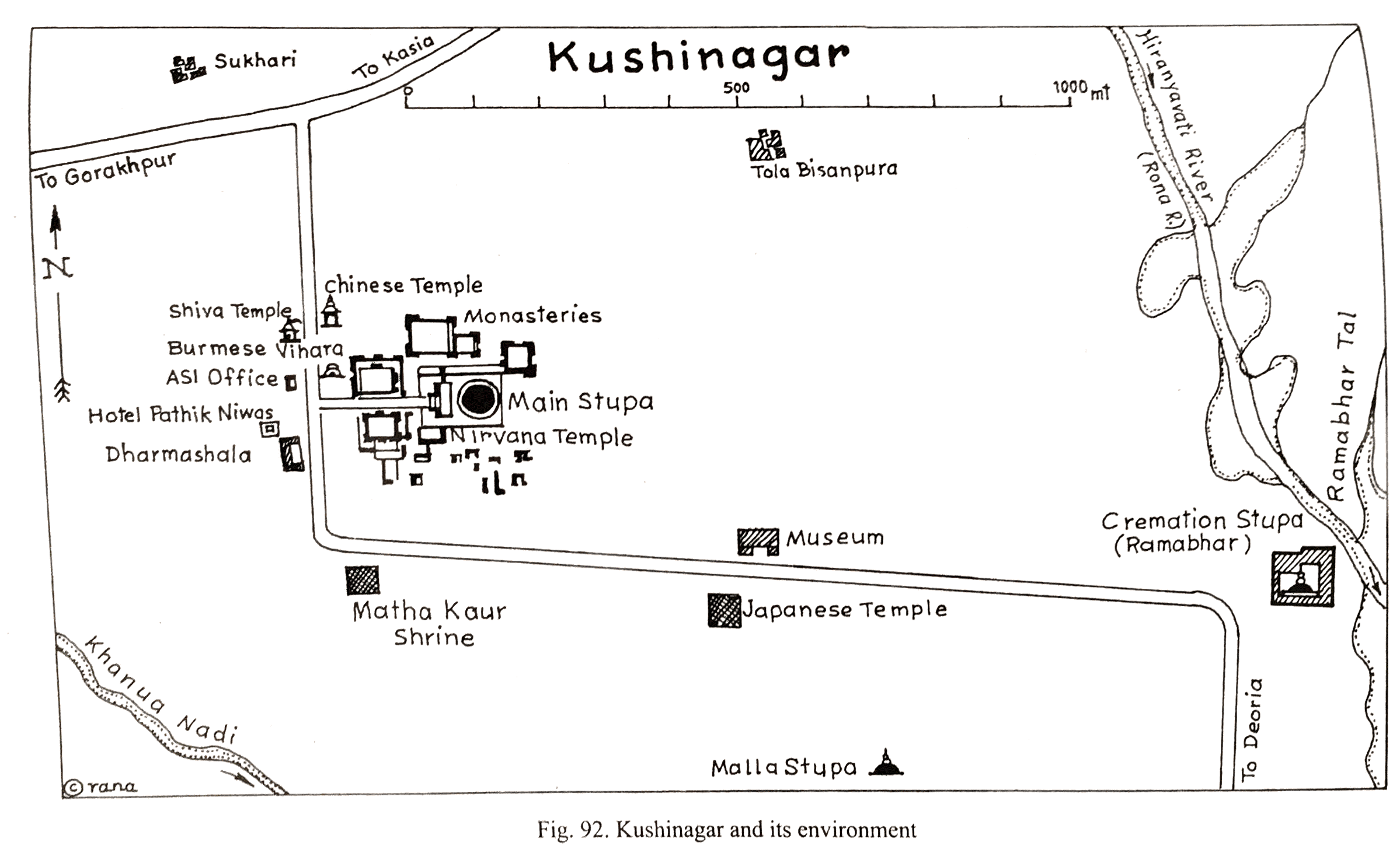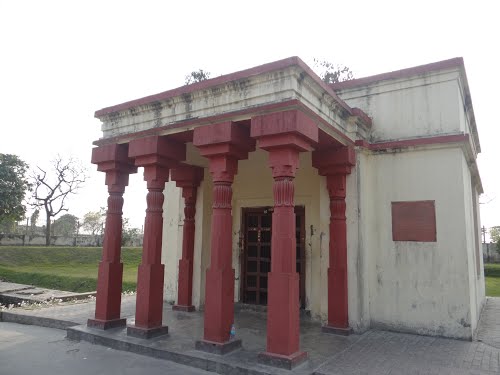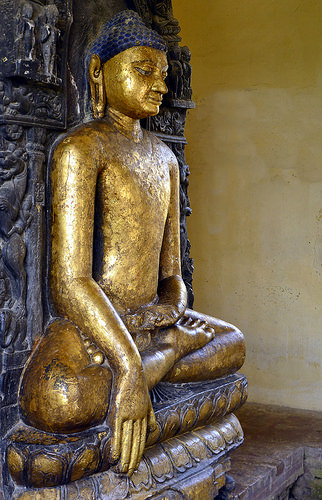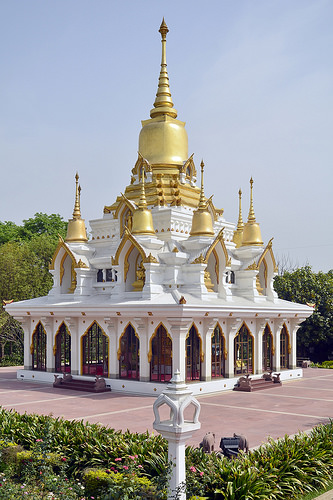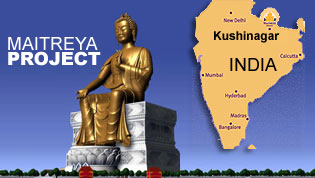Description and Short History
Before the Final entering into nirvana at Kushinara (Kushinagar), the Blessed One addressed the venerable Ananda, and said:
“It may be, Ananda, that in some of you the thought may arise, ‘The word of the Master is ended, we have no teacher more!’ But it is not thus, Ananda, that you should regard it. It is true that no more shall I receive a body, for all future sorrow has now forever passed away. But though this body will be dissolved, the Tathagata remains. The truth and the rules of the order which I have set forth and laid down for you all, let them, after I am gone, be a teacher unto you. When I am gone, Ananda, let the order, if it should so wish, abolish all the lesser and minor precepts.” (The Mahaparinibbana Sutta – Singh, 254)
Kusinara or Kushinagar is a town in the state of Uttar Pradesh in India. The town is located 175 km away from Lumbini and has a population of about 26 000 (Singh, 254). Kushinagar’s main road is the location of all places of worship, tourist attractions and accommodations (Singh, 254). Many buildings – a college, high school, residential buildings and public rest houses – have been built in the vicinity of the monuments (Singh, 254-6).
Kushinagar is the site of the Buddha’s parinirvana and was chosen for specific reasons. The main reasons include: (1) it was the proper venue for the preaching of the Maha-sudassana suttanta, (2) to admit Subhadda, who was living there, to the Sangha before his death and (3) the availability of the Brahmin Drona who would solve the problem of his relics (Singh, 256). The Buddha also previously died in Kushinagar in seven previous births (Singh, 256). The importance and profoundness of this place can be seen in the story of the Buddha reaching nirvana. When the Buddha was 81 years old, he gave his last major teaching at Vulture’s Peak and then travelled with Ananda (Singh, 256). The Buddha told Ananda he was sick and in pain from old age and that he would lay down his body after three months (Singh, 256). The Buddha and Ananda continued on their journey until the eventually reached the Hiranyavati river, south of Kushinagar (Singh, 258). The Buddha lay down in between two tall shala trees on his right side with his head to the north and spoke to Ananda about the doctrines of faith, rules of discipline to be followed by the monks and instructions about the disposal of his body (Singh, 258).
“The Buddha-looked quietly over the community and then said, “Bhikkus, listen to what the Tathagata now says. Dhammas are impermanent. If there is birth, there is death. Be diligent in your efforts to attain liberation! I declare to you that all conditioned things are of a nature to decay – strive on untiringly.” (Mahaparinibbana Sutta, Singh, 258)
“The are the Eight Great Stupas…In the city of Kusinagari, the place of the very powerful Malla tribe, between the two sal trees, he entered nirvana.” (Astamahasthanacaityastotra, Strong, 4)
After the Buddha spoke these last words, he closed his eyes; the earth shook and everyone felt their minds and bodies tremble and knew the Buddha passed into nirvana (Singh, 258). After cremation of the Buddha’s body, the ashes were examined for relics; a skull bone, teeth and shrouds were found (Singh, 259). These relics were collected and ceremoniously taken to Kushinagar and further were enshrined in stupas (Singh, 259). The Buddha’s relics were split amongst representatives from eight other countries and stupas were built over them (Singh, 260). Two centuries after the death of the Buddha, Kushinagar did not rise much in importance or fame (Singh, 260). However, once Mauryan Emperor Ashoka visited, Kushinagar was rejuvenated by the construction of stupas and pillars (Singh, 260). Even with these stupas built, the site was still fairly deserted. According to an inscription from the 10th-11th centuries, the construction of a monastery with a chapel enshrining an immense statue of the seated Buddha occurred (Singh, 261). But still, Kushinagar did not receive much attention for over a thousand years. In 1861-62, Alexander Cunningham, the Archaeological Surveyor of the East India Company, identified Kushinagar and excavating began in 1876-66 (Singh, 261). Excavations, renovations and restorations of buildings (monasteries) and monuments continued from 1890-1920 (Singh, 261). Kushinagar was rediscovered and identified by the end of the 19th century. From the excavations, it was discovered that a monastic tradition was prominent for a long time; remains of different monasteries from the 4th to 11th centuries were also found (Singh, 261).
Kushinagar Today
Today, Kushinagar holds great importance to those who practice Buddhism. According to the Uttar Pradesh Tourism website, Kushinagar is one of the principle centres of Buddhist pilgrimage and thousands of visitors come from all over the world every year. Unlike Lumbini and Bodhgaya, Kushinagar is not a UNESCO World Heritage Site. Fairs and festivals have become popular at Kushinagar and bring in many visitors, like the celebration of the Buddha’s birth and the New Year Festival (Singh, 261; Uttar Pradesh Tourism). The main attraction is the Mahaparinirvana temple, which holds a huge statue of the reclining Buddha – 6.10 metres long (Uttar Pradesh Tourism). Additionally, there are three groups of monuments: the Nirvana site, the central Stupa and the surrounding monasteries Matha-kura Shrine and Ramabhar Stupa (Uttar Pradesh Tourism).
The Nirvana site includes the Mahaparinirvana or Nirvana Temple and the Main (Nirvana) Stupa (Fig. 2). Directly behind the Nirvana Temple, a stupa was built over the exact place where the Buddha attained final Nirvana between the two sala trees (Singh, 261). The Main Stupa was excavated in 1876 as a large mass of brick-work in poor condition (Singh, 263). It currently stands at a height of 2.74 metres with an inscription saying the Buddha’s remains had been deposited there (Uttar Pradesh Tourism). In 1927, however, the stupa was restored with the help of donations from U Po Kyu and U Po Hlaing of Myanmar (Burma) (Singh, 263), which shows the importance of international connections between Buddhist communities. The Mahaparinirvana Temple holds a large statue of the reclining Buddha (Fig. 3). This statue and the pedestal have almost been restored and repaired back to their original forms, though some pieces are still missing (Singh, 263). In order for circumambulation and gathering of pilgrims, the Government of India in 1956 (on the occasion of Buddha’s 2500th birthday celebrations) made changes along the platforms and the final temple structure was completed (Singh, 264).
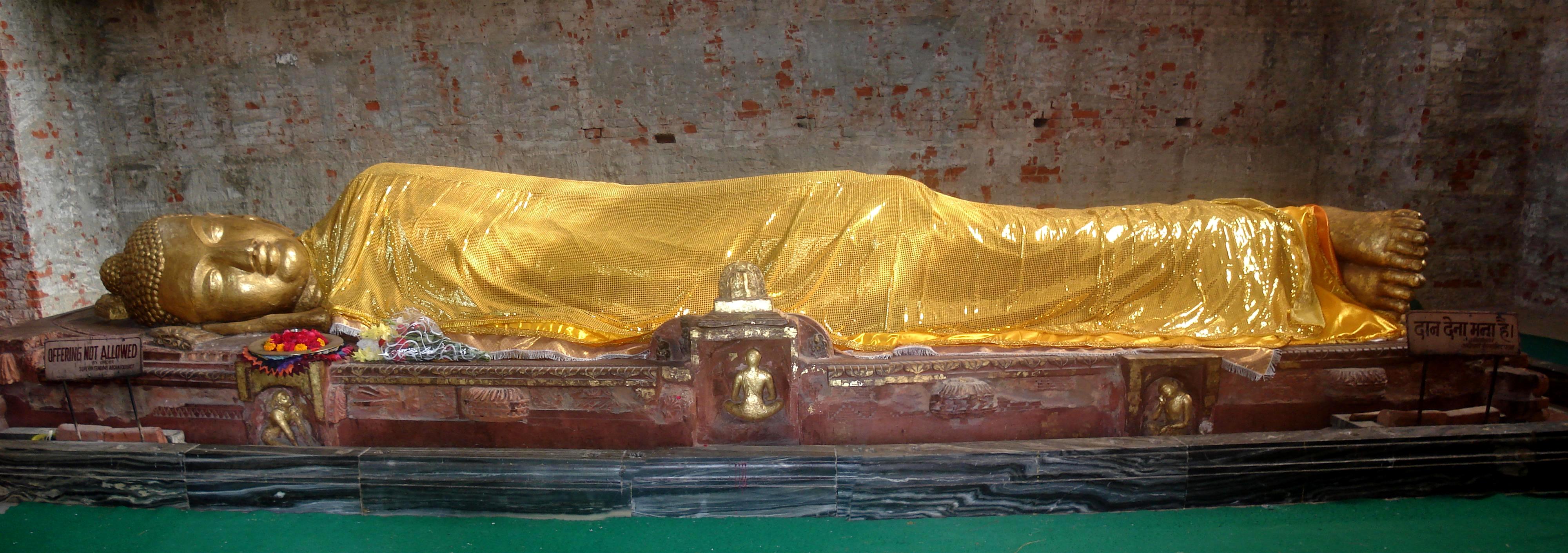
Figure 3: Reclining Buddha Statue, 6.1 metres long, carved out of a single block of reddish sandstone. Unknown author (2007). en.wikipedia.org/wiki/Kushinagar 07 Dec. 2015.
The Matha-kuar Shrine is located 200 metres southwest of the Main Stupa and contains a large statue of the Buddha (Fig. 4) (Singh, 266). It is believed that this is the location where the Buddha died after he delivered his last sermon. The statue is posed in seated meditation with his right hand touching the earth and symbolizes the moment before his Enlightenment and his victory over Mara (Fig. 5) (Singh, 266). In 1927, Burmese pilgrims built the shrine to shelter the statue as it was believed that the last sermon of the Buddha was given there (Singh, 266).
The Ramabhar Stupa is described as a large brick mound about 15 metres tall located 1.5 km away from Mahaparinirvana Temple and is the site of the Buddha’s cremation (Singh, 259). This stupa is found within a gated park where visitors can enter daily from sunrise to sunset. Additionally, monks can be found meditating at the Ramabhar Stupa. Since there is no entrance fee to see the Ramabhar Stupa, the government does not profit from it when tourists visit; however, it is still located in a well-kept park, which shows the importance and respect the locals have for this monument.
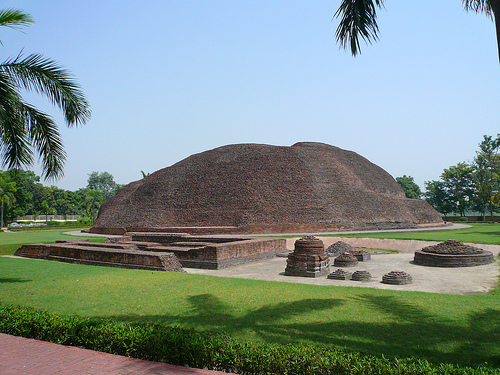
Figure 6: Ramabhar stupa, the place of the Buddha’s cremation. Unknown author (2010). www.traveldhoom.com 07 Dec. 2015.
Many of the temples (Watthai, Japanese and Chinese) in Kushinagar, hold beautiful statues of the Buddha. For example, in the Chinese Temple, the main attraction is a statue of the Buddha. Other places available for people to visit include: Indo-Japanese, Sri Lankan Temples, Burmese Temple, Birla Hindu Buddha Temple, Korean Temple, Shiva Temple, Ram-Janki Temple and Meditation Park (Uttar Pradesh Tourism). These temples not only provide a religious aspect to Kushinagar but also serve as tourist attractions. The numerous Buddhist monasteries shows that the religious aspect of Kushinagar is still present and thriving. On the celebration of the Buddha Purnima (the full-moon day of Vaishakha), a large event occurs every year brining in many religious and secular visitors. Additionally, an International Meditation Centre, a museum and a tourist office have been opened, which promotes tourism in Kushinagar. The Kushinagar Museum contains ruins from the site excavations (Uttar Pradesh Tourism). Accommodation and food in Kushinagar is relatively minimal; there are a couple hotels available and some accommodations provided by temples and a few restaurants. The majority of shops in Kushinagar sell Buddhist literature and pilgrimage articles (Uttar Pradesh Tourism). Kushinagar can be reached by the Kasia airstrip (5 km), Gorakhpur Airport (46 km), Deoria railway station (35 km) or Gorakhpur railway station (53 km). Kushinagar does not have a railway station itself making it less convenient for people to visit. Likely, the lack of accessibility results in fewer visitors compared to Lumbini and Bodhgaya.

Figure 7: Mahasukhamdada Chin Thargyi Pagoda of the Burmese Temple. M. Sommer (2015). www.flickriver.com 07 Dec. 2015.
There has been an ongoing project, the Maitreya Project, which involves the construction of a grand Maitreya Buddha statue in Kushinagar. However, there has been slow progress in the completion of this project (Foundation for the Preservation of the Mahayana Tradition (FPMT)). The site where the statue is to be built was handed over by the State Government of Uttar Pradesh to the Maitreya Project. “Large statues of Maitreya Buddha have traditionally been considered auspicious in preventing the period of “spiritual darkness” when the Shakyamuni Buddha’s teachings have disappeared and before the appearance of Maitreya Buddha’s teachings” (FPMT). In 2013, the State Government of Uttar Pradesh commemorated the project with a Foundation Stone Laying Ceremony (FPMT). The main purpose of the Project is not only to build this statue, but to bring as much benefit as possible – spiritually, in education and health care, and economically, through employment opportunities (FPMT). The hopes are that the Maitreya Buddha statue will bring in Buddhist practitioners who will establish a connection with the future Maitreya Buddha; the Project will also attract many visitors from India and other parts of Asia and the world (FPMT). The Government of India has proposed plans that would provide additional social and economic benefits including – a new railway station, which would link Kushinagar to the other main sites of the Buddhist pilgrimage; a new highway (already in progress), which would connect Kushinagar to other cities; and an international airport (Maitreya Project). An update in 2014, explained that the social work aspect of the project has already begun – mobile health clinic and health care education (FPMT). Currently, there are plans to move the 7 metre Maitreya Buddha statue in Bodghaya to Kushinagar to provide a temporary focal point for visitors, and a site for ceremonies and classes (FPMT). As seen in the Maitreya Project, there are plans for further development of Kushinagar. Continual growth and development of the area will increase tourist and pilgrimage visitors and benefit the economy. It is vital, for the government to support this development and place effort in the completion of projects. In comparison to the other sites discussed on this blog, Kushinagar is the least developed and the government has yet to truly invest time and money into further development.
